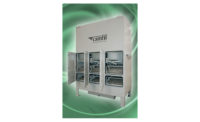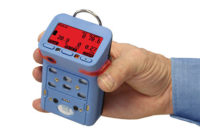
You’ve just started a new job and now have responsibilities that include industrial hygiene work. You’re the person who must find and control harmful exposures to gases, fumes, mists and vapors; protect workers from dangerous noise levels; and deal with indoor air complaints. Where do you begin? What do you do first?
Let’s discuss a few basic steps that can help you assess and
control a variety of workplace exposures:
1. Review records of previous assessments and reports.
Take a close look at any information that may have been previously gathered to help you better understand what kinds of exposures were being assessed, measured, or controlled. Your predecessor or an industrial hygiene consultant should have left behind a trail of historical information. Be sure to review appropriate material safety data sheets (MSDSs) for established threshold limits and recommended personal protective equipment (PPE).If you’ve completed a thorough hazard assessment of your workplace, the required PPE should be noted as a part of that review, and it may help with industrial hygiene-related work.
2. Observe work processes and talk to your employees.
By talking to workers in your facility, you can often fill in any voids in past survey work, or begin to make up for the absence of exposure evaluations. Often employees will readily let you know what surveys have been conducted and what controls were put into place — or proposed but never implemented.Individuals who work in areas that have been surveyed in the past may know if a product has been substituted or if the process has been changed to bring exposures down to acceptable levels. These workers may know if engineering controls such as ventilation were added or improved, or if equipment upgrades have been made, also allowing contaminants to be acceptably controlled.
Spending time with your co-workers — observing, questioning and listening — is an invaluable part of any industrial hygiene assessment.
3. Prioritize your concerns based on your review and interviews.
Between what you’ve learned through interviews and what may have been left behind on paper, it’s time to start prioritizing exposures. You might want to make a simple list of high noise areas, for example, and processes that involve gases, vapors or fumes. Also, map out these areas so you can visually depict relevant operations.Begin to cross-reference your findings about current work activities with exposure limits established by OSHA, the American Conference of Governmental Industrial Hygienists (ACGIH), or with your company’s standards.
High-priority areas could include tasks that involve a large volume of paint spraying with constituent materials that have low threshold limit values (TLV), say less than 10 ppm. And since the products in use are being atomized and dispersed in ways that become respirable, initial measurements could be necessary in the immediate future. These work areas may have to be monitored often, especially if the processes change regularly or if exposures fluctuate.
Other areas with exposures that don’t occur daily or are very irregular may become a second or third priority. Determinations for evaluating and sampling exposure levels in these locations might come a bit later. A lower-level priority could include work that involves low toxicity exposures or nuisance contaminants such as dust, which can be “spot checked” on an infrequent basis.
4. Determine if preliminary sampling is necessary.
Areas and work processes that might not have been evaluated in the past — or quite possibly have never been monitored — will need some type of evaluation that measures the concentration of exposure to workers. Short-term or grab sampling tactics, involving a hand-held pump and colorimetric tubes that react to certain chemicals, are quick and efficient ways to get rough estimates of employee exposures. But remember, these are rough estimates only.Real-time, multi-gas detectors can also be used to provide quick readouts of various contaminants to determine levels of exposure at a given time. These sampling methods should be used only as a preliminary means of measurement. At this point, you want to determine if exposures are well below most limits.
If they are not, some remedial action might have to be taken until exposures can be more accurately monitored and studied. Employee exposures can be controlled by eliminating a product or substituting a less harmful one; using personal protective equipment; slowing or shutting down the work process; rotating workers on jobs to limit the amount of exposure; or through engineering controls that can enclose or separate contaminants from workers. (See sidebar)
5. Conduct a more detailed survey and plan for ongoing monitoring.
Industrial hygiene is both an art and a science that requires a great deal of hands-on experience, coupled with sound academic training. If you are not experienced and knowledgeable in conducting detailed surveys that include monitoring, assessing findings and writing reports, the challenge facing you can be laborious, quite time-consuming, and dangerous to your employees and employer if you don’t know what you’re doing.If this is indeed the case, my recommendation is to use a well-qualified individual or company to apply the skills of a Certified Industrial Hygienist (CIH). Even though modern technology has made industrial hygiene work easier, it can remain a daunting task. There is a real art to observing special kinds of work and determining methods to measure specific exposures. Plus, it may be important to look at possible synergistic effects and the conflicts of contaminants with media used for sampling.
Other considerations will have to be made to ensure accurate data gathering, all of which can be very tricky and require a true professional. Finally, accurate and thoughtful report writing is a time-consuming but critical part of the survey process. It can’t be overlooked.
Some form of the final report should be shared with the appropriate people in your organization, especially those workers who could be at risk. The accuracy of a report and the way it is worded can save you a great deal when it comes to putting exposures in perspective for employees.
These five steps I’ve outlined are very general. There are numerous details that could be discussed if time and space permitted. If you want to become more involved with industrial hygiene practices, take educational courses and work closely with a trained industrial hygienist who can guide and supervise your efforts.
Sidebar: Controlling exposures
Here is the order of preference for controlling industrial hygiene exposures:- Eliminate use of the contaminant entirely, followed by substitution of a less harmful product.
- Utilize control strategies that can include a number of engineering means involving enclosure of contaminants through vessels, pipework, bulk tanks, spray booths, dilution ventilation, or separating noisy areas.
- Use appropriate forms of PPE.
- Schedule some type of job rotation as the least desirable form of reducing employee exposures.
Remember that combinations of these methods can be used to control personnel exposures. Extreme cases might require total elimination (banning the use) of a substance or contaminant. With less serious concerns, engineering controls, such as ventilation, should be considered to significantly lower health risks.
Usually, steps that move you toward eliminating or controlling a contaminant through engineering methods should be more carefully studied and planned after a detailed assessment and survey are completed.




